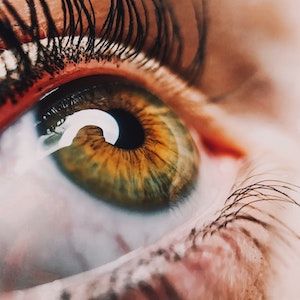Article
COVID-19 Vaccination Rates Lower in Adults with Vision, Hearing Disabilities
Author(s):
The findings suggest access to the vaccine was lowest among those who reported blindness, deafness, or multiple disabilities.
Kea Turner, PhD, MPH, MA

New cross-sectional findings may help to inform initiatives to promote equitable and accessible COVID-19 vaccination in patients with disabilities, who may be overlooked in these larger efforts.
The study data reveal COVID-19 vaccine initiation is lower among adults with hearing or vision disabilities when compared to adults without disabilities.
“Few state vaccination plans have prioritized adults with vision or hearing disabilities,” wrote study author Kea Turner, PhD, MPH, MA, Department of Health Outcomes and Behavior, Moffitt Cancer Center. “Furthermore, vaccination among adults with disabilities has been neglected in data collection efforts.”
Barriers in access to care exist among this patient population, including a lack of accommodations, clinician bias, and communication bias. The onset of the COVID-19 pandemic initiated additional barriers for these patients, due to universal masking hiding facial expressions and reducing speech quality, as well as lack of accessible vaccine appointment scheduling, the investigators added.
There has been limited research done to assess COVID-19 vaccination among adults with vision or hearing disabilities, with the current study aiming to estimate the prevalence of and factors in vaccination for these patients.
Data were collected and analyzed from the 2021 and 2022 US Census Bureau Household Pulse Survey (n = 916, 085). The survey assessed COVID-19 vaccine initiation, vaccine series completion, and factors in health care access, including demographic characteristics, clinical characteristics, and social determinants of health.
Investigators defined vision disability as serious difficulty seeing even with eyeglasses or blindness and hearing disability as serious difficulty hearing even with a hearing aid or deafness. They calculated adjusted estimated probability and 95% confidence intervals (CI) of COVID-19 vaccine initiation using multivariable logistic regression adjusted for survey week, demographic characteristics, clinical characteristics, and social determinants of health.
The study population consisted of 916,085 US adults (weighted population, 192,719,992; mean age, 51.0 years; 52.0% women). Demographic data show the cohort’s race and ethnicity included Hispanic (15.7%), non-Hispanic Asian American (5.2%), non-Hispanic Black (10.4%), and non-Hispanic White (65.1%) individuals.
Most participants (82.7%) were observed to have initiated the COVID-19 vaccine series and most (98.3%) had completed the series.
Of the adults with vision impairment, COVID-19 vaccination rates were 83.0% for adults with no to little vision impairment, 76.7% for adults with serious difficulty seeing even with eyeglasses, and 62.9% for adults with blindness.
The data show adults with serious difficulty seeing (mean difference, -6.3%; 95% CI, -7.5% to -5.1%; P <.001) and blindness (mean difference, -20.1%; 95% CI, -25.1% to -15.0%; P <.001) had significantly lower vaccination rates compared with adults with little to no vision impairment.
After controlling for demographic characteristics, clinical characteristics, and social determinants of health, adults with blindness (mean difference, -6.3%; 95% CI, -11.1% to -1.5%; P = .009) were less likely to initiate COVID-19 vaccination, compared with adults with little to no vision impairment.
They additionally observed adults with deafness (mean difference, -5.5%; 95% CI, -9.2% to -1.9%; P = .003) were less likely to initiate the COVID-19 vaccine compared with adults with little to no hearing impairment after controlling for these factors.
Additional research may be needed to monitor COVID-19 vaccination disparities among adults with vision or hearing disabilities and to address disparities (eg, accessibility of vaccine registration sites and public COVID-19–related broadcasts for individuals with vision or hearing disabilities),” Turner added in conclusion.
The brief report, “COVID-19 Vaccination Rates Among US Adults With Vision or Hearing Disabilities,” was published in JAMA Ophthalmology.





